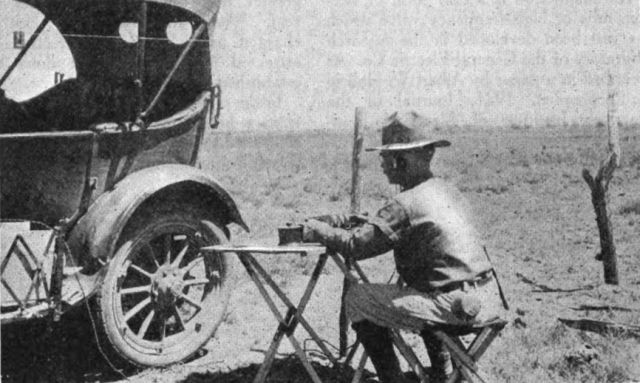
6ZAF Furnishes Astronomical Time by Radio
RADIO for November, 1921
For the first time radio has successfully furnished the official time for an important astronomical expedition. But in the words of Director W. W. Cambell of the Lick Observatory and head of the party that went into the desert wilds of Lower California to select observing stations for the eclipse of the sun. September 10, 1923, "it will not be the last time". An interesting story is involved in the part played by radio in this expedition and by 6ZAF, who in public life is A. H. Babcock, electrical engoneer for the Southern Pacific Railroad and an enthusiastic radio fan.
Late in the morning of the day on which this scientific expedition was to leave San Francisco, Director Campbell telephoned to Mr. Babcock that the chronometer on which they were to depend in making their observations of latitude and longitude had been broken and could not be replaced at the last minute. Whereupon 6ZAF said that if he could get together a receiving set and one of those devices that have made the dollar famous no chronometer would be needed. The time signals from San Diego would be more accurate than any single chronometer and could easily be picked up 200 miles away.

6ZAF Picking Up Radio Time Signals in Lower California
Director Campbell was sceptical, but carried away by the boldness of the plan and the necessities of the occasion, doubtfully consented to try the experiment. Through the courtesy of the Colin B. Kennedy Co. and Leo J. Meyberg, Mr. Babcock was able to assemble a simple, portable set.
So the first week in September saw this set as an important element of the equipment loaded into the automobile that carried the party from San Diego into the desolation of the desert hills and canyons to the south of the boundary between California and Mexico. The path of the eclipse will cross this inaccessible region whose clear atmosphere and lack of moisture is the astronomer's delight. The set was the joke of the party during the trip.
But, arriving at the scene of action, Mr. Babcock quickly strung 150 feet of aerial from a tree to a fence post, made a counterpoise, hooked up to the automobile battery, and at noon on the seventh of September, picked up the time signals and established their position.
Director Campbell vows that never again will he be without a radio set and any day we expect to hear that Lick Observatory is no equipped. At such time we hope to publish an illustrated description of the station and two years from now to chronicle the part played in the observation of the eclipse when Einstein's theory will again be tested.




